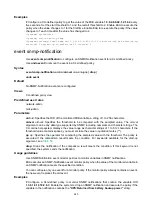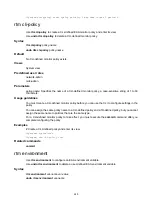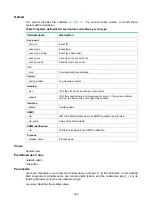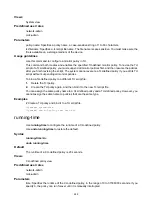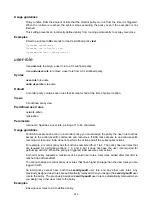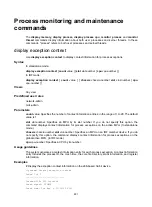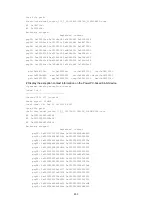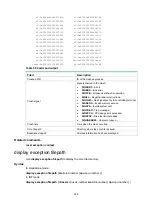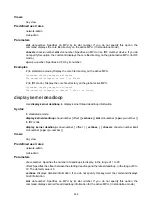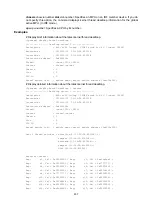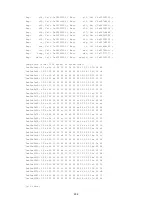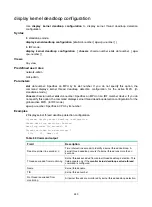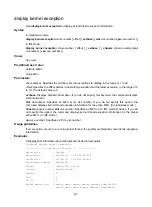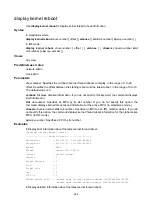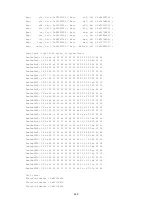
255
a6:0xffffffff8021349c a7:0x20696e206368616e
t0:0x0000000000000000 t1:0xffffffff80105068
t2:0xffffffff80213890 t3:0x0000000000000008
s0:0x0000005555a99c40 s1:0x000000ffff89af5f
s2:0x0000000120007320 s3:0x0000005555a5f470
s4:0x000000ffff899f80 s5:0xffffffff803cc6c0
s6:0xffffffff803cc6a8 s7:0xffffffff803cc690
t8:0x0000000000000002 t9:0x0000005555a3bc98
k0:0x0000000000000000 k1:0x0000000000000000
gp:0x0000000120020460 sp:0x000000ffff899d70
s8:0x000000ffff899d80 ra:0x0000000120006c1c
sr:0x000000000400fff3 lo:0xdf3b645a1cac08c9
hi:0x000000000000007f bad:0x000000555589ba84
cause:0x0000000000800020 pc:0x0000005555a3bcb4
Table 58 Command output
Filed Description
Crashed PID
ID of the crashed process.
Crash signal
Signals that led to the crash:
•
SIGABRT
—Abort.
•
SIGBUS
—Bus error.
•
SIGFPE
—Erroneous arithmetic operation.
•
SIGILL
—Illegal hardware instructions.
•
SIGQUIT
—Quit signal sent by the controlling terminal.
•
SIGSEGV
—Invalid memory access.
•
SIGSYS
—Invalid system call.
•
SIGTRAP
—Trap message.
•
SIGXCPU
—CPU usage limit exceeded.
•
SIGXFSZ
—File size limit exceeded.
•
SIGUNKNOW
—Unknown reason.
Crash time
Time when the crash occurred.
Core file path
Directory where the core file is saved.
Backtrace stopped
All stack information has been displayed.
Related commands
reset exception context
display exception filepath
Use
display exception filepath
to display the core file directory.
Syntax
In standalone mode:
display exception filepath
[
slot
slot-number
[
cpu
cpu-number
] ]
In IRF mode:
display exception filepath
[
chassis
chassis-number
slot
slot-number
[
cpu
cpu-number
] ]



